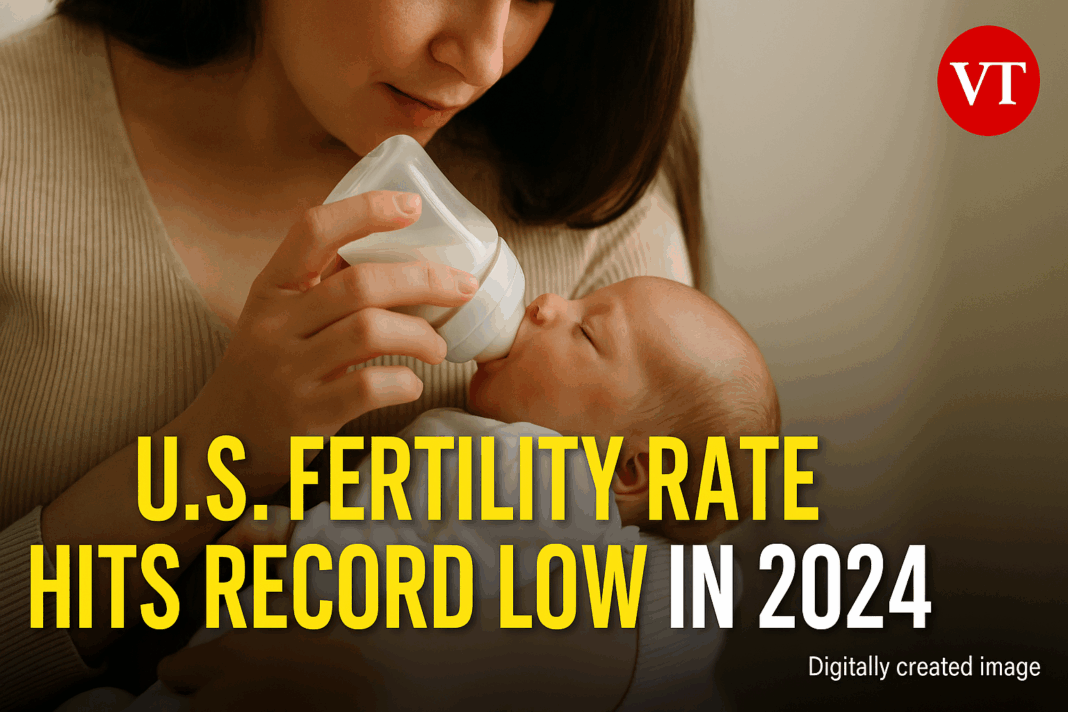- The general fertility rate declined to 53.8 births per 1,000 women aged 15–44 in 2024.
- The total fertility rate fell below 1.6 children per woman — the lowest on record in the U.S.
- Birth rates dropped for women under 35 but rose for those aged 40–44.
- Primary cesarean deliveries slightly increased to 22.9%.
- Medicaid coverage for births declined across all maternal age groups.
The Big Picture
The U.S. fertility rate has dropped to an all-time low, with fewer than 1.6 children born per woman in 2024, according to a new report by the U.S. Centers for Disease Control and Prevention (CDC). The finding aligns the United States with Western Europe in terms of declining fertility rates, highlighting a demographic shift that could have long-term implications for economic growth, healthcare, and social services.
What’s New
The CDC’s National Center for Health Statistics (NCHS) noted a 1% increase in the number of births in 2024 (totaling 3,628,934), but a simultaneous 1% decline in the general fertility rate (GFR) — now at 53.8 births per 1,000 women aged 15–44.

Image: CDC U.S. Birth Data – July 2025
While teen birth rates continued to decline, reaching 12.6 per 1,000 females ages 15–19, birth rates for women in their 20s and early 30s also decreased. However, women aged 40–44 saw a 2% increase in birth rates — a continuing trend of delayed motherhood in the U.S.
What They’re Saying
CDC officials Joyce A. Martin, M.P.H., Brady E. Hamilton, Ph.D., and Michelle J.K. Osterman, M.H.S., the authors of the data brief, emphasized the long-term trend: “From 2007 to 2024, the number of births has declined 16%, and the GFR is down 22%,” they wrote in the July 2025 Data Brief.
By the Numbers
- Teen (15–19) birth rate: Dropped 4% to 12.6 per 1,000 females.
- Age 20–24: Fell 3% to 55.8 per 1,000.
- Age 25–29: Dropped 2% to 89.5 per 1,000.
- Age 30–34: Declined 1% to 93.7 per 1,000.
- Age 35–39: Unchanged at 54.3 per 1,000.
- Age 40–44: Increased 2% to 12.7 per 1,000.
Other Health Metrics
The rate of primary cesarean deliveries rose slightly from 22.8% in 2023 to 22.9% in 2024. The trend varied by age group, with women aged 30–39 showing the highest increases.
Medicaid was the primary payer for 40.2% of all births in 2024 — a 3% decline from 2023. Every maternal age group saw a decrease in Medicaid-covered deliveries.
The Bottom Line
Though the U.S. saw a marginal increase in total births, the overall decline in fertility — especially among younger women — signals broader societal and economic shifts. As women delay or opt out of motherhood entirely, experts say policies around childcare, housing affordability, and work-life balance may need to evolve to support future population growth.
Also Read
Follow Virginia Times for regular news updates. Stay informed with the latest headlines, breaking stories, and in-depth reporting from around the world.
A global media for the latest news, entertainment, music fashion, and more.
















